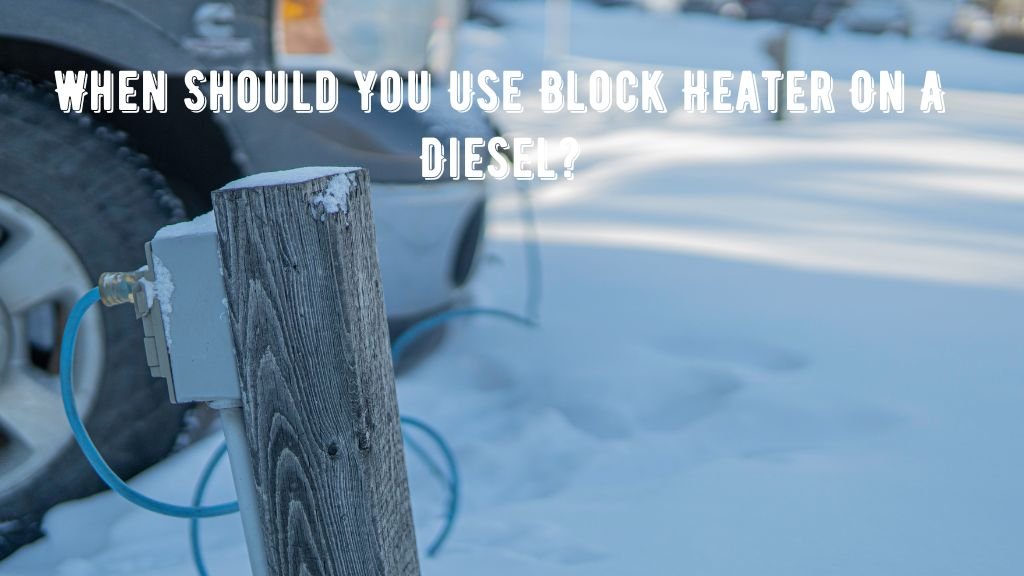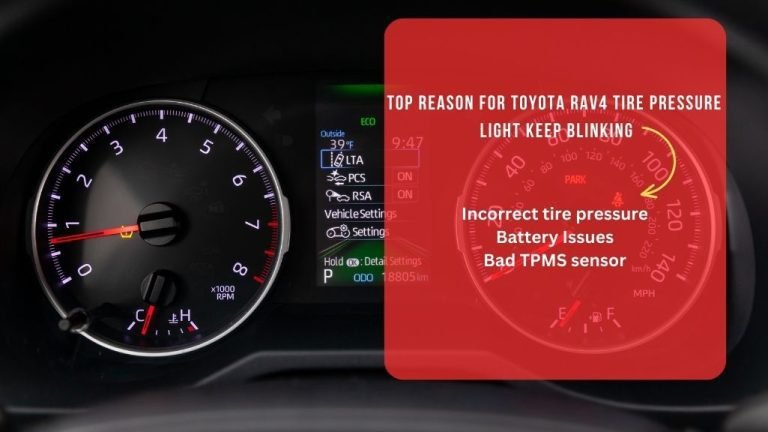When To Use Block Heater On A Diesel? [Temperature & Duration]
Freezing weather is a foe to diesel engines. Starting from slowing down the battery chemistry and operation to affecting internal parts, it does some cold-blooded crimes. Hence to prevent the situation, a block heater exists. But just because it’s a savior, you shouldn’t exploit it.
So, When To Use Block Heater On A Diesel? The right time to use a diesel block heater is when the temperature reaches below 5°F and four hours before using vehicle.
However, it all depends on how cold it is, the type of engine, and many other factors. For moderate temp, an hour of plugging in the block heater should do the job.
When To Use Block Heater On A Diesel?

Plug in the block heater to a diesel engine when temperature goes down below 5°F for 2 to 4 hours. This is what I and most experts like AMA recommend.
Neither should you use the block heater at temp above 5°F nor keep it plugged in for several hours.
The main job of a block heater is to help heat up the engine block, especially its internal fluids like coolant. Depending on the ratio of antifreeze to water, coolant has a freezing point of anywhere between -35°F and -85°F.
However, it doesn’t mean that I can wait till the block or liquid freezes to use the heating device. Because when it does, it causes damage to the system.
- Frozen coolant becomes crystalized which can block the passages in the engine.
- As it expands due to freezing, both the system and passages can crack under pressure.
Hence, the job is to prevent the special liquid from getting partially or fully frozen. And I can do it by using a block heater way before the weather starts affecting the diesel engine.
How Long Should You Use Block Heater On A Diesel?
You can use heater for 3 hours depending on how cold it is and engine type. Some may take 2 while some 4 hours to heat up the engine block.
Can You Leave The Block Heater Overnight?
You can but keeping the block heater plugged in overnight can be a waste of electricity.
In case you can’t keep track of it, then I recommend you install a timer on the block heater. It will help save energy and bills by turning the heating element on and off automatically.
Using the heater carelessly will be nothing but a waste of electricity.
What Happens If You Don’t Use Block Heater?
At the initial stage, engine block gets extremely cold and its liquids turn thicker if block heater isn’t used when temperature reaches below 5°F.
You may experience different troubles depending on how cold the outside is.
As per the survey, I found that 7 out of 10 drivers in Alberta don’t follow the advice suggested by experts. While 29% wait till -4°F, 11% wait till -13°F. They also revealed that 27% never use the heater.
However, the severity of the problems varies as I mentioned. Let me explain them.
- The vehicle may still start if it’s around -4°F. In that case, the engine takes longer to start and uses more fuel to run. Not just that, it may also affect the starter, battery, and engine itself.
- As the temperature lowers, you may not be able to start the engine, but if you do, the internal system may deteriorate. Engine block gets cold and liquids turn thicker and dense. And when liquids start freezing, it expands causing cracks in aluminum or cast iron engine block and damaging the system.
Can You Start Your Car With Block Heater Plugged In?

Yes, you can start the car provided that you’re extremely careful. However, it’s not advisable to start the engine while the block heater is plugged in since it may put the device, extension cord, and block heater connection at risk.
The right method is always to unplug the device, then start the vehicle to be on the safe side. Otherwise, there might be times you may forget to unplug block heater and drive off which can eventually result in accidents.
However, you can take some steps so you never forget to unplug the device. Let me provide you with two of them.
Tips To Remind You Of Disconnecting Block Heater:
- Use an extension cord with illuminated ends to get some visibility when it’s dark.
- Wrap the cord around the driver’s side mirror.
Why Do Diesel Engines Need Block Heaters?
A diesel engine requires block heaters to help heat up the engine so it starts fast while letting the internal fluid flow smoothly.
Such a heating element comes with different advantages.
- Vehicle starts quickly.
- Fluids and lubricants flow throughout the system smoothly.
- Helps decrease wear on the engine.
- Saves fuel and improves its efficiency.
- Reduces harmful emissions.
- Defrosts windows and windshield quicker.
Combining these benefits, you’ll get comfort from the device since it makes the vehicle “ready” to use. All of these make Engine block heater worth it.
Do Block Heaters Use A Lot Of Electricity?
Block heaters may consume around 5 to 7kWh electricity every day if used for 4 hours. That’s quite a lot.
A diesel block heater amp draw ranges from 6 to 20amps and comes rated between 750 and 1,500 watts. It depends on factors like temp of the block, duration of use, and ambient temp.
The cost will vary mostly based on the wattage, how long it’s used, and electricity charges. In case it’s 1,000 watts, then it may cost 10 to 25 cents per hour.
So, I recommend you don’t use it unnecessarily.
Can Engine Block Heater Cause Damage?
Block heaters are safe as long as they are used the right way and the cords or cables aren’t defective.
Most accidents related to block heaters take place due to faulty cords and cables. One event occurred in 2018 when the device caused fire as a result of issues with the cable leading Ford to recall over 463,000 F150 pickup trucks. A major reason was contaminants and water that caused corrosion at the connectors leaving a fire.
The wrong size of the cord can also bring mishaps. Too small cords can get overloaded by currents and lead to a fire.
Hence, make sure to keep the cords clean and dry. Also, use high-quality extension cords to stay safe.
in conclusion When To Use Block Heater On A Diesel
Just because many people don’t follow instructions doesn’t mean you can do the same. Abusing block heaters not only will increase the electricity bill but also cause accidents.
In case it’s less cold outside, you can keep it plugged in for an hour. Here, I think having a timer will help do the job. It’ll run and adjust the heater according to the requirement.
Another trick is to drain the oil into a container, warm it up, and refill the tank. I call it a free and safe way to help warm engine when the temp isn’t so cold.
Video References
River City Ford Sales Ltd
Nasruddin is a passionate car enthusiast with a love for troubleshooting and diagnosing all sorts of vehicle problems. With years of experience in OBD diagnostics, Nasruddin, has become an expert in identifying and solving complex automotive issues.
![6.5 Diesel Injection Pump Failure Symptoms [with fixes!]](https://fourwheelask.com/wp-content/uploads/2023/09/6.5-Diesel-Injection-Pump-Failure-Symptoms-768x512.webp)
